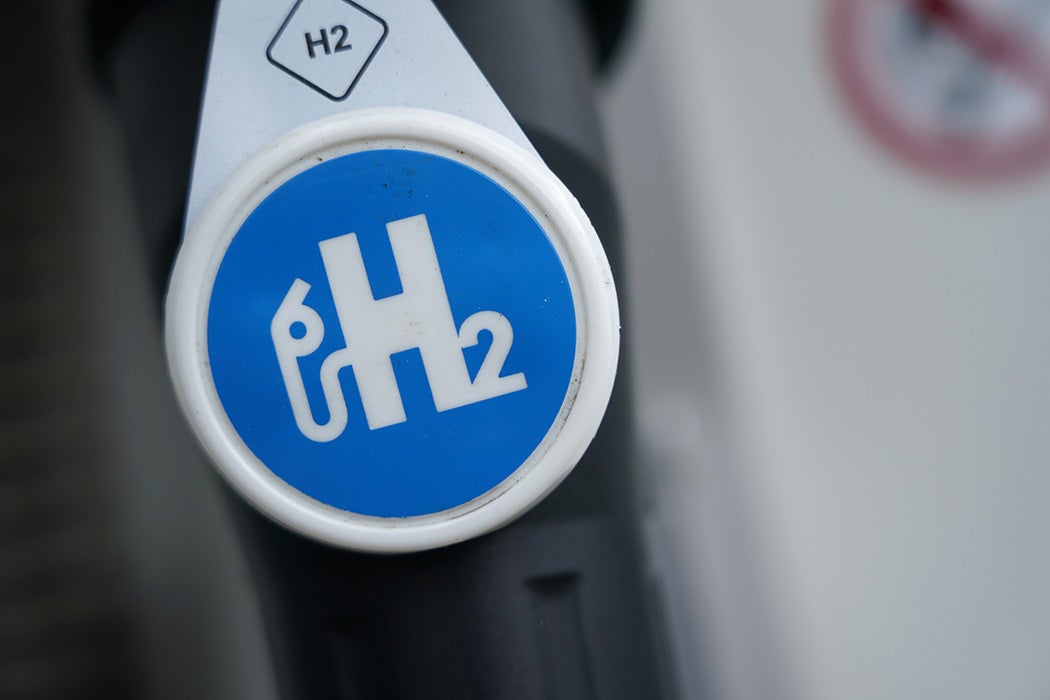As world leaders pledge a sharper pivot toward a carbon-free future, an old answer is resurfacing to a many-trillion-dollar question: Where will we get energy when the sun doesn’t shine and the wind doesn’t blow?
Set aside thoughts of giant batteries, nuclear fission, natural gas, and pumped hydropower for the moment. The future of global energy markets might be in creating carbon-free hydrogen—and the implications extend beyond climate change. According to scholars Fridolin Pflugmann and Nicola De Blasio, green hydrogen may upend (or perhaps just rework) the century-old balance of power between oil- and gas-exporting countries and those that rely on them.
Green hydrogen is created when carbon-free electricity (usually made from wind or solar) forces water molecules to split, storing energy that’s later released when the hydrogen rejoins with oxygen, forming water again. Hydrogen can be stockpiled or transported as a liquid or gas, and may replace both oil and natural gas in sectors that are tricky to electrify, like heavy industry and air travel.
The technology has existed for decades, but because renewable energy was expensive until recent years, any hydrogen made with it was likewise too costly to use at scale. Now that wind and solar are cheap, and the world is more serious about tackling climate change, the green hydrogen future may be poised to take off—a shift that could redistribute geopolitical power.
After a century of dominance by globalized petrostates, a green hydrogen boom could democratize energy. Instead of drilling and fracking for deposits deep beneath the soil, an exporting country would simply need to capture more sun or wind energy than it uses over the course of a year.
But abundant wind and sunny days alone do not make a green hydrogen magnate. Many of the oil-rich and sun-scorched nations of the Middle East that dominate oil production today could certainly capture extra solar energy, but they may never become major green hydrogen exporters because they lack another increasingly valuable resource: water. Pflugmann and De Blasio also find that fossil fuel transport infrastructure, like pipelines and storage areas, could help set up nations to become major green hydrogen exporters, since this infrastructure can be repurposed for hydrogen.
Weekly Newsletter
In the future, green hydrogen juggernauts may rise, as nations with promising hydrogen prospects invest in even more hydrogen research, development, and infrastructure. Australia is currently doing just that, with several major green hydrogen plants in the works across the country’s sunniest regions. The authors predict that one of the most consequential international power shifts would be Europe’s reduced dependence on natural gas from Russia. Despite these new dynamics, they write, “If renewable hydrogen were to be adopted at scale, we believe that future market dynamics will resemble today’s regional natural gas markets—with corresponding potential for similar geopolitical conflicts.”
There is one hopeful distinction between the existing global politics of oil and gas and the burgeoning politics of green hydrogen: Unlike fossil fuels, which are concentrated in a handful of nations, all sorts of countries have strong renewable energy resources and water. Because the ones best equipped to export green hydrogen are so geographically and politically diverse—from Morocco to Australia to Norway—the rise of green hydrogen may lower the temperature on international oil and gas politics, as well as the global climate.







